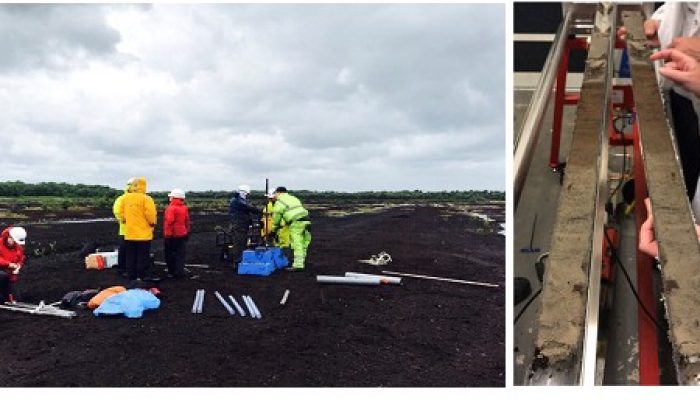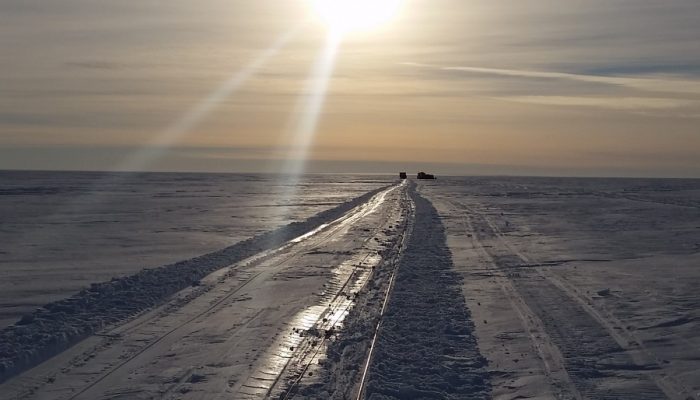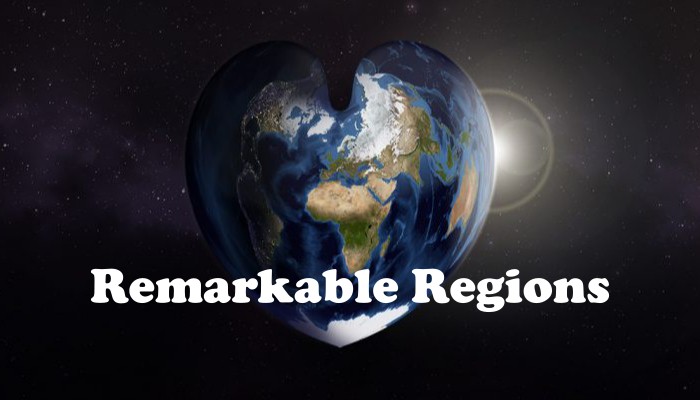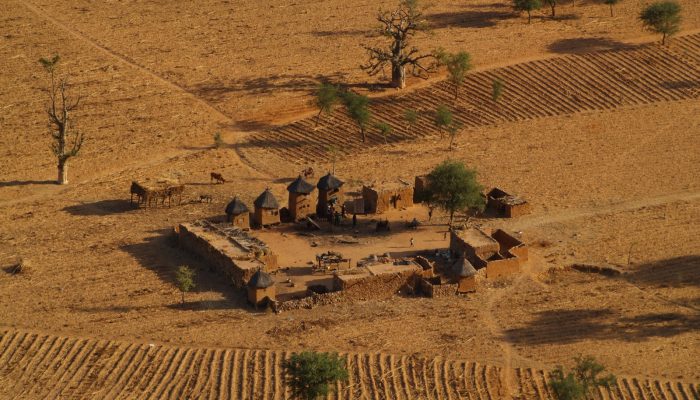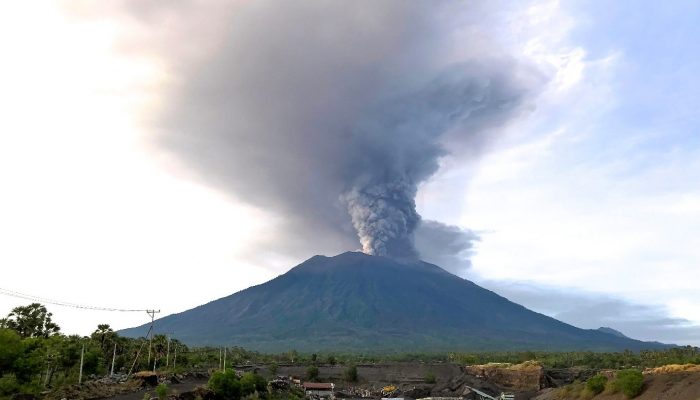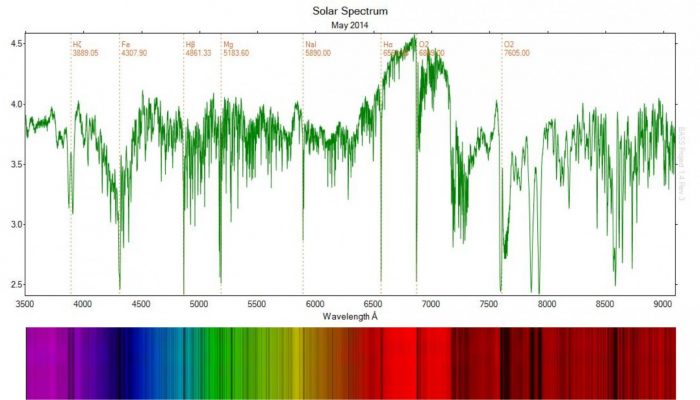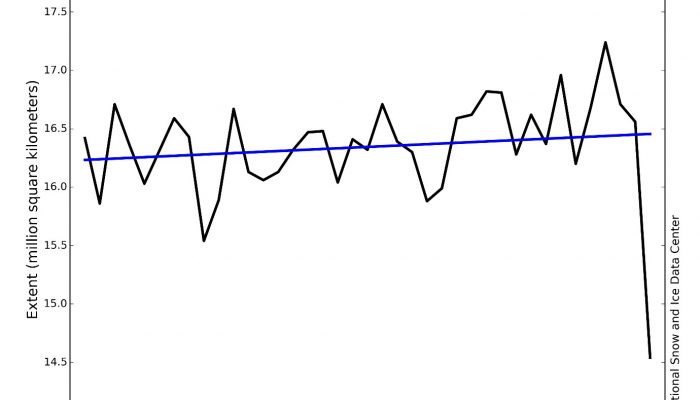Name of proxy Varved glacial lake sediments Type of record Sedimentological structures Paleoenvironment Ice marginal lake environments Period of time investigated Last Glacial Termination (LGT, c.21-14 thousands of years (ka)) to present times How do varves work? Proglacial lakes form in front of glaciers and act as sinks for water and sediment flowing from melting ice. Analyses of proglacial lake ...[Read More]
If you didn't find what you was looking for try searching again.
Cryospheric Sciences
Image of the Week – Vibrating Ice Shelf!
If you listen carefully to the Ekström ice shelf in Antarctica, a strange sound can be heard! The sound of a vibrating truck sending sounds waves into the ice. These sound waves are used to “look” through the ice and create a seismic profile of what lies beneath the ice surface. Read on to find out how the technique works and for a special Cryosphere Christmas message! What are we doing with this ...[Read More]
GeoLog
GeoPolicy: Reaching out on Twitter – casually engage with policymakers!
Reaching out to policymakers and sharing your research with them can seem like a daunting task! While there are many formal outlets for engaging with policymakers (such as completing questionnaires, contributing to workshops and participating in paring schemes), there are also more casual methods that can be done sporadically and with less effort. One example of this is engaging with policymakers ...[Read More]
Natural Hazards
Doing and wandering of NhET at the EGU’s General Assembly
If you were wondering what a group of young scientists such as NhET does in its free time, this is the right post for you to read! In between doing exciting fieldwork on an active volcano, writing an inspiring paper on landslide monitoring and applying that complicated algorithm for the analysis of earthquake return times: we organize events at the EGU’s General Assembly (GA) targeting Early Caree ...[Read More]
WaterUnderground
Want to contribute to IAHS’ discussion about 23 unsolved problems in hydrology?
Inspired by the famous list of unsolved math problems (hence the header image), the International Association of Hydrological Sciences has an interesting challenge for us all: define 23 unsolved problems in hydrology: The International Commission on Groundwater is going to submit a few problems via the LinkedIn forum. A few of us at Water Underground are going to put our thinking caps on and submi ...[Read More]
Geodynamics
Remarkable Regions – The India-Asia collision zone
Every 8 weeks we turn our attention to a Remarkable Region that deserves a spot in the scientific limelight. This week we zoom in on a particular part of the eastern Tethys as Adina Pusok discusses the India-Asia collision zone. She is a postdoctoral researcher at the Institute of Geophysics and Planetary Physics, Scripps Institution of Oceanography, UCSD, US. Without doubt, one of the most striki ...[Read More]
GeoLog
The role of exploration geologists in fostering healthy community-industry relationships
In November 2015, the failure of the Fundão tailings dam in Brazil devastated the surrounding landscape and local villages, killing 19 people and leaving the media filled with images of landslides, fallen infrastructure and ruined livelihoods. The limited communication and lack of relationship between joint operators BHP Billiton and Brazilian company Vale with the surrounding communities exacerba ...[Read More]
Geology for Global Development
How do you monitor an internationally disruptive volcanic eruption? How can you communicate SDGs in an Earth Science class? Jesse Zondervan’s Nov 13 – Dec 13 2017 #GfGDpicks #SciComm
Each month, Jesse Zondervan picks his favourite posts from geoscience and development blogs/news, relevant to the work and interests of Geology for Global Development . Here’s a round-up of Jesse’s selections for the past four weeks: Bali’s Mount Angung started erupting ash this month, and a post on the Pacific Disaster Center’s website gives you an insight into the workings of Indonesia’s early ...[Read More]
Solar-Terrestrial Sciences
Dr. Helen Mason – Solar space missions: a life with the Sun
In the December issue of Life of a Scientist we have an interview of Dr. Helen Mason. She was working at the Department of Applied Mathematics and Theoretical Physics at the University of Cambridge, UK until recently when she retired. Her research interests include UV and X-Ray spectrum of the Sun. She has also devoted a lot of time in promoting science and working with schools from all over the w ...[Read More]
Cryospheric Sciences
Image of the Week – Understanding Antarctic Sea Ice Expansion
Sea ice is an extremely sensitive indicator of climate change. Arctic sea ice has been dubbed ‘the canary in the coal mine’, due to the observed steady decline in the summer sea ice extent in response to global warming over recent decades (see this and this previous posts). However, the story has not been mirrored at the other pole. As shown in our image of the week (blue line in Fig. 1), Antarcti ...[Read More]

